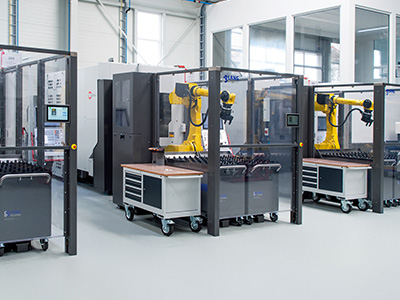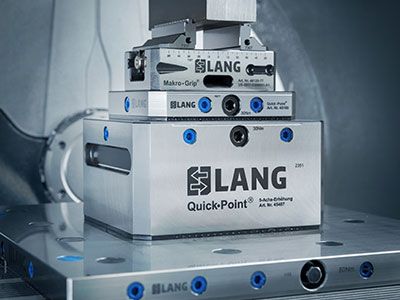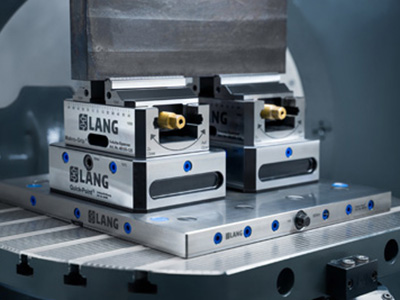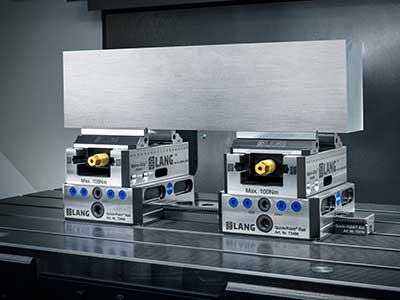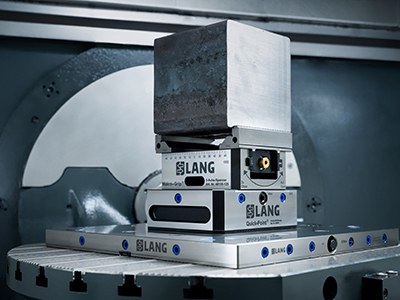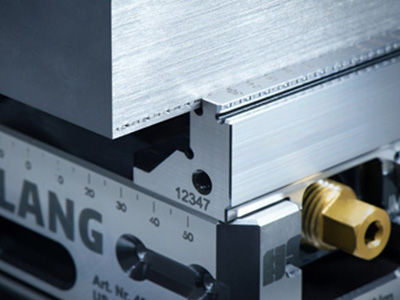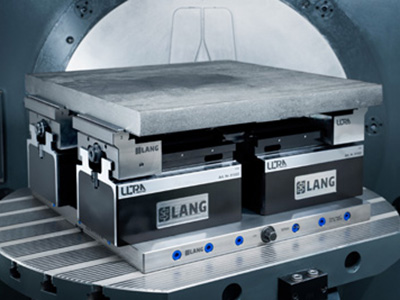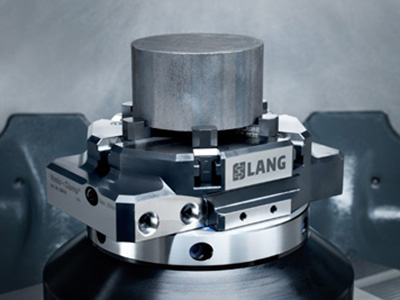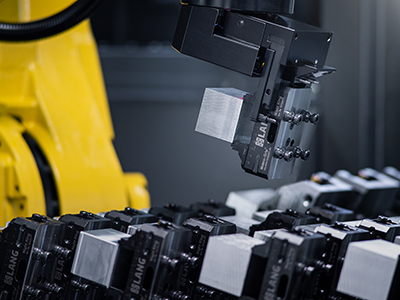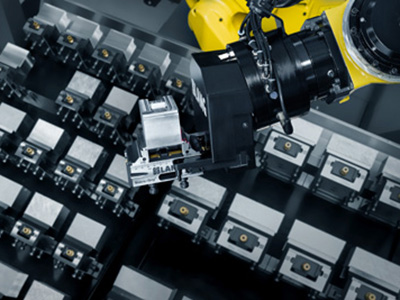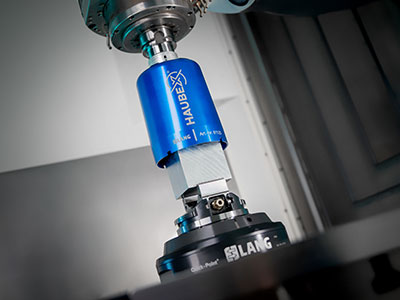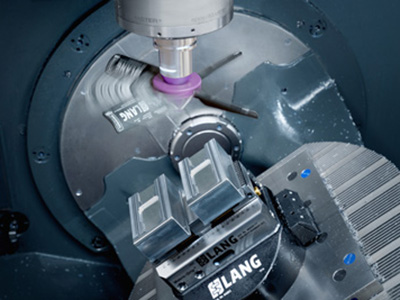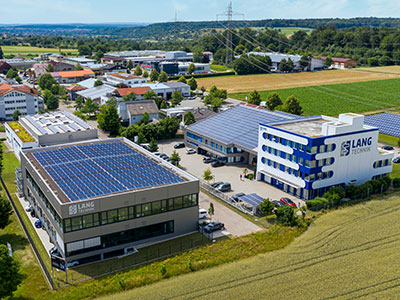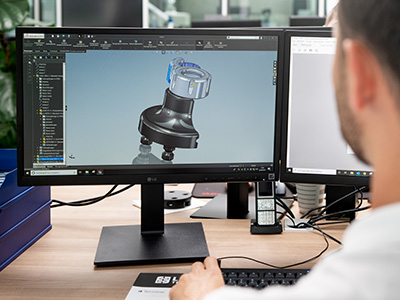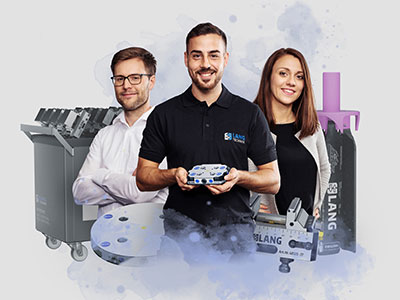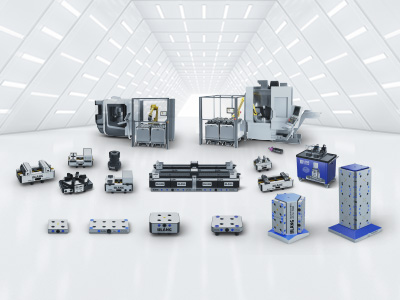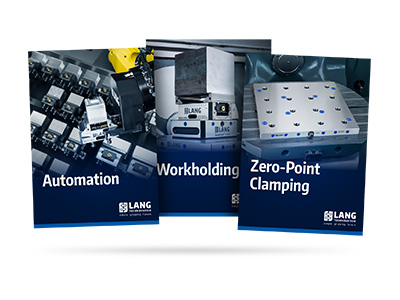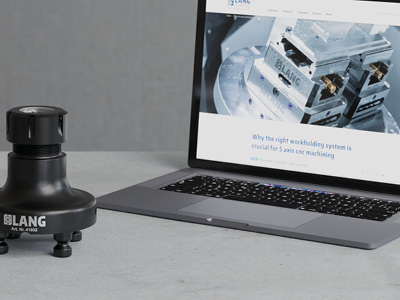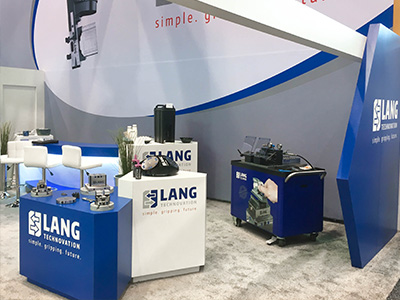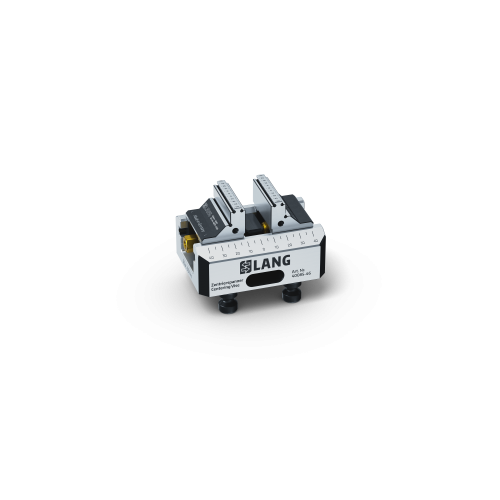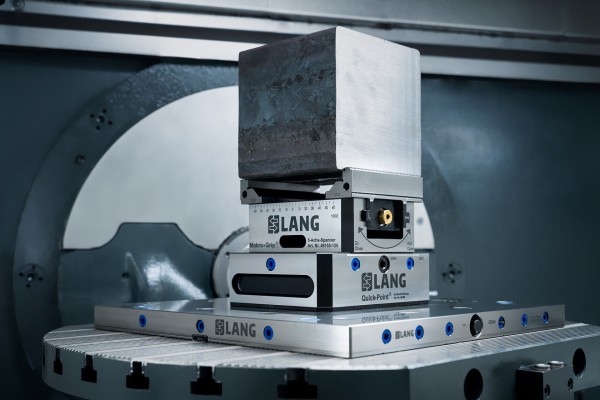
Why a self-centering vise outperforms traditional vises in 5-axis machining
Let’s explore the key benefits of using a self-centering 5-axis vise compared to conventional vises, and why the compact, modular solution from LANG Technik USA is a game-changer for your shop floor.
What makes a self-centering vise so valuable?
A self centering vise automatically aligns the workpiece to the center of the machine table. But let’s not get it twisted: Self-centering does not necessarily mean an automatic clamping system. Self-centering often characterizes the movement of both clamping jaws toward the center of the vise by manually actuating a threaded spindle. It eliminates the need for manual adjustments, reduces setup time, and ensures that each part is consistently aligned—a critical factor for 5-axis milling operations. Here are the major advantages:
1. Optimized accessibility for 5-axis machining
Unlike bulky vises with a fixed jaw, a compact centering vise offers superior access to 5 sides of the workpiece. This is especially vital in 5-axis applications, where the goal is to minimize the quantity of operations per part and maximize single-setup machining. The streamlined form of a 5-axis vise allows the cutting tool to approach the part from virtually any angle.
2. Space efficiency
Large traditional vises can take up excessive space on the table, limiting how many parts you can run at once. A self centering vise, particularly a compact one like the LANG Technik 5-axis vise, enables tighter setups and better table utilization, making it ideal for high-mix, low-volume environments.
3. Repeatable precision
By clamping the part symmetrically from both sides, a self centering milling vise guarantees repeatable and symmetrical positioning. This precision is essential not only for 5-axis machining, but also for secondary operations like backside machining or second setups, where alignment is critical.
4. Faster Setup, Less Downtime
With fewer components to adjust and no need to manually center the part, self-centering vises save time on every setup. That translates into more spindle uptime and a quicker ROI for your 5-axis milling machine.
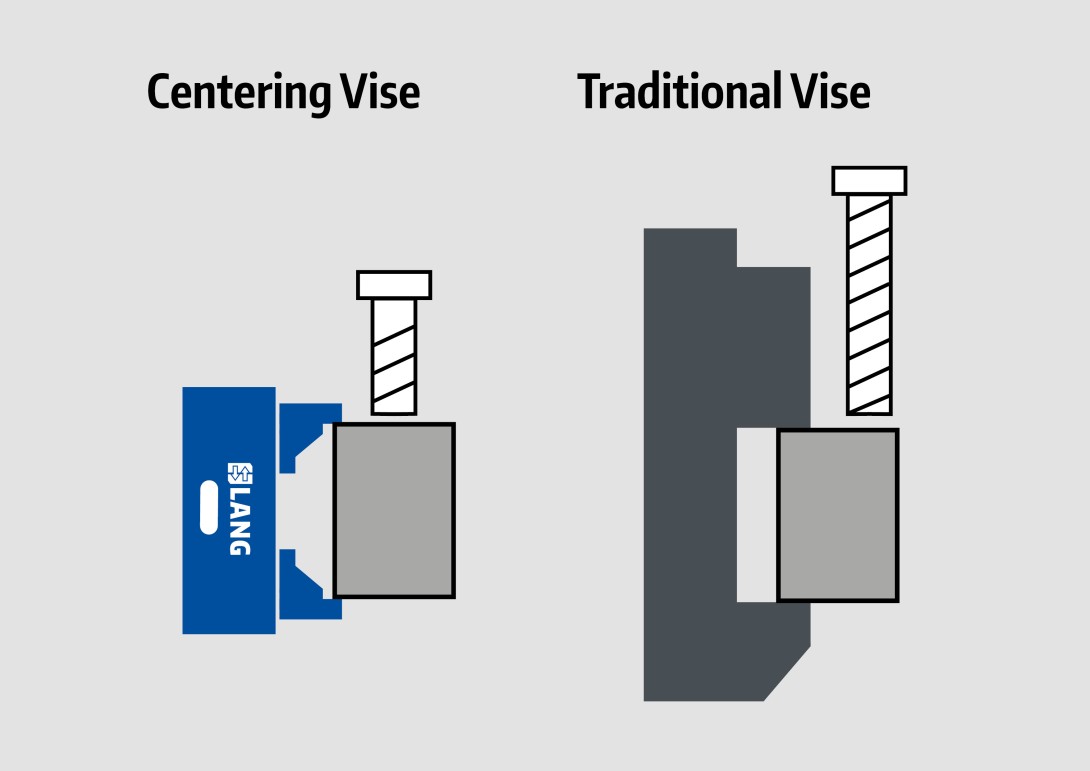
Where Does a 5-Axis Vise Make the Most Sense?
A 5-axis milling vise is ideal for:
- Complex, multi-sided parts requiring tool access from multiple angles
- High-value components where setup accuracy is crucial
- Compact machining centers where space is at a premium
It’s also an excellent tool for second operations. For example, after the first side of a part is machined, a self centering vise makes it fast and easy to align and hold the part for backside machining with minimal fuss.
Why choose LANG Technik USA’s 5-axis vise?
LANG Technik USA offers a 5-axis self centering vise that stands out in both design and performance. Here's why it's a smart investment:
- Ultra-compact design: Ideal for 5-axis CNC machines, maximizing tool clearance and minimizing interference.
- Modular and exchangeable jaws: Easily adapt to different workpieces or use for second-side machining.
- Unmatched repeatability: Once dialed in, this milling vise and especially the LANG Technik holding serration consistently delivers perfect location of the workpiece without the guesswork.
- Durability and build quality: Case-hardened steel built for production-level reliability, shift after shift.
Whether you’re optimizing for high-speed precision milling or need a dependable milling machine vise for high-mix workflows, the LANG 5-axis vise offers unmatched value.
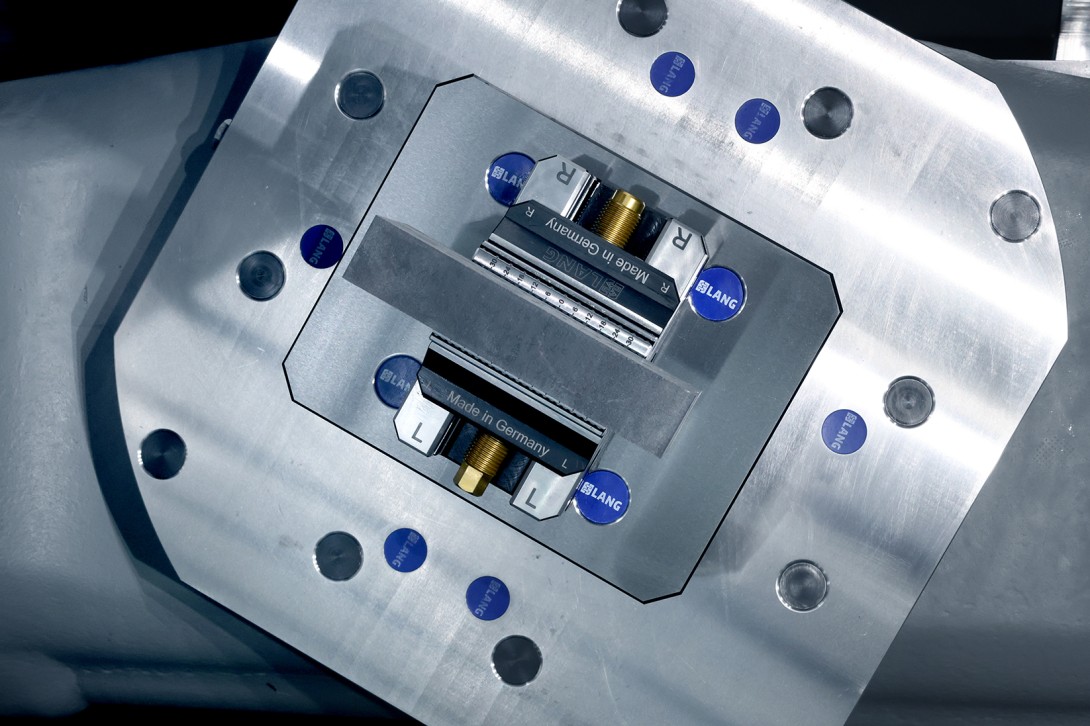
Conclusion: The smarter choice for modern machining
In today’s competitive machining environment, small efficiencies can lead to big advantages. Investing in a self centering vise - especially a well-designed 5-axis version like the one from LANG Technik USA - can significantly improve your workflow, reduce setup time, and increase machining accuracy.
If you're looking to get the most out of your 5-axis CNC machine, upgrade your milling vise to one that’s built for the job. Because in modern manufacturing, smart clamping is just as important as smart cutting.
Questions and answers
Why does LANG Technik not offer vises with a fixed jaw?
For years, we have seen the advantages of 5-axis machining and accordingly align our products with concentric programming. Furthermore, modern probe systems make the reference to a fixed jaw obsolete.
Which are the jaw width of the vises?
The Makro•Grip® 5-Axis Vise is available in jaw widths of 46 mm, 77 mm and 125 mm. The clamping ranges are as follows:
- Jaw width 46 mm: Clamping range up to max. 120 mm
- Jaw width 77 mm: Clamping range up to max. 205 mm
- Jaw width 125 mm: Clamping range up to max. 355 mm
Are the centering vises from LANG robust?
With its case-hardened base body and clamping jaws milled from solid material, the LANG vise can withstand even the greatest cutting forces. In addition, the vices are low-maintenance and low-wear, so that a long service life can be guaranteed.
Will a workpiece hold on only 3 mm clamping depth?
Absolutely, yes. The clamping depth of 3 mm is sufficient to securely fix the workpiece on the support surface of the clamping jaw. At the same time, the low clamping edge requirements allow for perfect accessibility from all sides. The machinist can save material and also benefits from a smaller chip removal volume for second operations.


